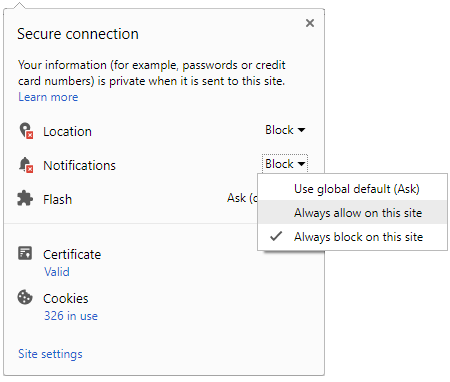Just In
- 56 min ago
 2021 Mercedes-Benz C-Class Globally Unveiled: Features Electrification As Standard!
2021 Mercedes-Benz C-Class Globally Unveiled: Features Electrification As Standard! - 59 min ago
 Flipkart To Deploy More Than 25,000 Electric Vehicles By 2030: Read More To Find Out!
Flipkart To Deploy More Than 25,000 Electric Vehicles By 2030: Read More To Find Out! - 2 hrs ago
 Tata HBX Micro SUV Spotted Testing Once Again India: Here Are All The Details!
Tata HBX Micro SUV Spotted Testing Once Again India: Here Are All The Details! - 3 hrs ago
 Harley Davidson Pan America 1250 & 1250 Special Globally Unveiled: The Newest Adventure Tourer
Harley Davidson Pan America 1250 & 1250 Special Globally Unveiled: The Newest Adventure Tourer
Don't Miss!
- News
 PM Modi speaks on various reforms undertaken in Budget 2021-22
PM Modi speaks on various reforms undertaken in Budget 2021-22 - Sports
 Golf: Arjun Atwal will play for Dad and Tiger Woods as he joins Anirban Lahiri at Puerto Rico Open
Golf: Arjun Atwal will play for Dad and Tiger Woods as he joins Anirban Lahiri at Puerto Rico Open - Technology
 Airtel Forays Into Advertising Business; Launches Adtech Platform
Airtel Forays Into Advertising Business; Launches Adtech Platform - Movies
 PSPK 27: First Look & Title Of Pawan Kalyan Starrer To Be Out On March 11
PSPK 27: First Look & Title Of Pawan Kalyan Starrer To Be Out On March 11 - Lifestyle
 9 Signs He Has Lost Interest In The Relationship
9 Signs He Has Lost Interest In The Relationship - Education
 IB ACIO Answer Key 2021: MHA To Release IB Answer Key 2021 Tier 1 Soon
IB ACIO Answer Key 2021: MHA To Release IB Answer Key 2021 Tier 1 Soon - Finance
 Private vs Public Sector Banks: Best 1-Year FDs With Returns Up To 5.95%
Private vs Public Sector Banks: Best 1-Year FDs With Returns Up To 5.95% - Travel
 Best Places To Visit In Karnataka In March
Best Places To Visit In Karnataka In March
RNAIPL Factory Visit: An Inside Look At The Production Process Of The Nissan Magnite SUV
Back in December 2020, Nissan introduced their first B-SUV (compact-SUV) offering in the Indian market, the Magnite. The sub-4-metre SUV became an instant hit in the Indian market, registering over 32,000 bookings within the first month of its launch.
The Nissan Magnite became a game-changer for the Japanese brand in the Indian market, with the company having to ramp up production to meet the growing demands for the SUV. To check it out, we recently were invited to the RNAIPL (Renault-Nissan Automotive India Private Limited) facility in Oragadam, Chennai, Tamil Nadu.

RNAIPL Facility
The RNAIPL production facility is part of the two brand's alliance and is used to manufacture vehicles for both Renault and Nissan. The facility is equally divided by the two brands, with their products being manufactured and assembled on the same lines.
Talking a bit about the facility, the RNAIPL factory was first set up in 2010. Over the past 10 years, the company has produced over 2.1 million vehicles (domestic & exports). The plant currently manufactures 10 products in total including products of Datsun, Nissan and Renault.

The production facility also exports many of the products to over 69 international markets across the globe. Apart from cars, the RNAIPL facility exports vehicle parts to 29 countries as well.
We visited the manufacturing facility outside Chennai to check out the production process of the Nissan Magnite, which has become a game-changer for the brand in the Indian market. Here is a brief look at the entire process.

Nissan Magnite Production Process
The production process of the Nissan Magnite or any vehicle at RNAIPL starts off at the Stamping Shop. As the name suggests, all the raw sheet metals which come into the factory are sorted out and sent through huge stamping machines in the first part of the plant.
The facility has two kinds of stamping machines, Standard and XL. The standard machines are used to stamp out smaller parts of the car, while the XL machines are used for larger body panels and other surfaces. This includes the side panels, bonnet, doors and others.

The stamping shop works overtime, not only stamping out sheet metal for current products on sale, but also for older and discontinued models and other export components as well. Post the stamping process, the now pressed body parts are sent to inspection, after which they are moved to the body shop.

Once here, the body shop is split into three lines; one for the Kwid and Redi-GO, while the remaining two lines take up the remaining models. The Renault Kwid and the Datsun Redi-GO models have a more manual fitment and assembly process. The other two lines, which include the Nissan Magnite have automated robots at every stage of fitment and assembly.

Once the outer shell of the car has been assembled, it is then moved to the paint booth (a process which we, unfortunately, couldn't witness). Post the painting process, the structure is then moved to the final assembly line, where the entire car comes together.

While the car is being assembled together, there is a separate manufacturing and assembly line for the powertrain. Here the engine for each of the models is manufactured from scratch and brought to the body shop, before pairing the skeletal frame of the car with its correct powertrain — a process called ‘marriage' in the auto industry.

Once the entire car comes together, each model undergoes various levels of testing. The RNAIPL has three testing tracks within its facility. Here each of the vehicles undergoes rigorous testing under various conditions. This includes high-speed tests, suspension, braking and rain test (to check for any water entering the cabin).

The Nissan Magnite also undergoes a special water-wading test to further ensure there is no seepage of water into the cabin from the underside of the SUV.

Once the final quality checks are done, the cars are then moved to a huge parking area, before being shipped across the country and globe to various destinations to meet their owners.

Thoughts On The Nissan (RNAIPL) Factory Visit In Chennai
The factory visit gave an insight into what goes on during the manufacturing process of the Nissan Magnite. With an extra shift now in place to meet the demands, the RNAIPL facility is definitely in full force to bring the popular SUV to its customers in a quick time.



 Click it and Unblock the Notifications
Click it and Unblock the Notifications















